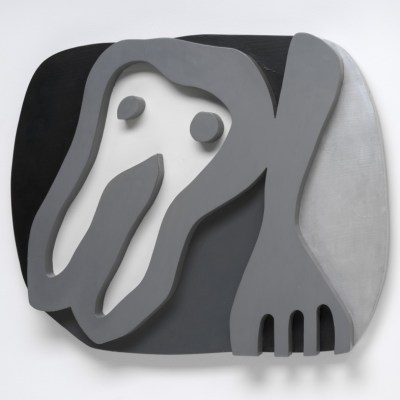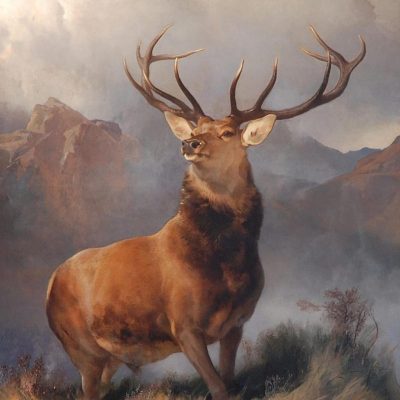Since the death of the Belgian surrealist René Magritte in 1967, his unsettling images have achieved international prominence and, for better or worse, have embedded themselves in the global mainstream. It was the rise of Pop art in the 1960s that belatedly secured Magritte’s success, but the commercial aftermath of his work has obscured its subversiveness. Now the disquieting acid green Granny Smith suspended before the bowler hatted face of Le Fils de l’homme (1964) or the ‘Ceci n’est pas une pipe’ motto in La Trahison des images (1929) seem as unlikely to arouse further argument as a Dalí melting clock or a Klimt kiss. But Magritte’s message is still relevant, the key to his timelessness lying perhaps in what he termed ‘the secret affinity’ of images: that dislodging of the expected, in order to offset a sterile reality with the more inwardly satisfying sphere of enchantment or magic.
This collection of the artist’s multifaceted critical and literary texts only serves to clarify that relevance. An absorbing compendium, it is edited by Kathleen Rooney and Eric Plattner, and the supporting texts by Rooney and Sandra Zalman combine to give an insightful overview. Originally commissioned by John Calder in 1987, the translations by the late Jo Levy are of texts sourced from the 749-page Écrits Complets (Paris Flammarion, 1979); but they remained unpublished, mummified in the Calder archives in Caen until now. This miracle of their rediscovery should be applauded, for we now for the first time have proper access in English to the insurgent personality simmering behind the clerkish exterior. Moving easily between the roles of critic, polemicist, prose poet, acerbic comic, opinionated heckler, and eulogist, and ranging across manifesto, lecture, review, dramatic text, and aphorism, Magritte’s writings demonstrate an unflaggingly scabrous wit and provide an invaluable textual anchorage for his work as a painter.
Magritte’s mission as a writer is essentially to express in words what is communicated more cryptically through his paintings, to probe or pinpoint, and reveal hidden possibilities which the too impatient eye has missed. If this sounds like the work of a detective, then it comes as no surprise to learn that a young Magritte, an ardent admirer of his compatriot Simenon, drafted his own detective novels under the pseudonym ‘Renghis’ (a union of René and his middle name Ghislain). Here, in his search for authenticity in art, he appears to see himself in the role of bloodhound.
There are rich pickings to be had here concerning Magritte’s views on the future of art and on a painter’s legacy. In a 1966 interview with Guy Mertens he declares, ‘For me the future is the end of the world. Whether my painting is worth more or less in a hundred years, I don’t mind. It might merely have a historical value. What is important is that in a hundred years time, someone finds what I found, but in a different way.’ The emphasis is crucial, for Magritte sees the reproduction of images and their interconnectedness as aids to unveiling the world’s secrets, but only so long as they are inventively reinterpreted. Treading water is not an option. But Magritte is no rudderless dreamer; he is at pains to point out that this search for transcendence may well be an exercise in futility, but it is the visionary character of the journey that counts.
Sandwiched between copious interviews are memoirs and critiques of other painters, including James Ensor, Max Ernst, Georges Braque, Francis Picabia and, notably, Armand Permantier, a neglected and reclusive figure whom Magritte championed. Elsewhere Magritte expounds on technique, claiming cinema as the true champion of the image in the 20th century and rather pugnaciously dismissing Impressionism, Cubism, Futurism (and presumably any other -isms) as being mere devices, heralding much promise but managing only ‘fleeting moments of superficial vitality’. In an interview with Maurice Bots from 1951, he even dismisses painting itself, or at least its decorative qualities. ‘I have nothing to express! I simply search for images, and invent and invent: only the image counts, the inexplicable and mysterious image, since all is mystery in our life.’ In a 1939 essay, ‘Bourgeois Art’, a Marxist-leaning Magritte lambasts the romantic artifice of the artist detached from the rest of humanity, while straying into the mantrap of his own romanticism by lauding the sanctity of the manual worker. Magritte had no time either for conventional criticism. With Baudelairean relish he compares its authors to ‘blundering flies, buzzing around a corpse in an advanced state of decay’.
But what most impresses in these diverse writings is the consistency of purpose. It’s exhilarating to sense Magritte’s lucid self questioning, which underlies the wit and pointed humour. ‘Everything we see hides another thing,’ he wrote. ‘We always want to see what is hidden by what we see, but it is impossible. Humans hide their secrets too well…’ The legacy of this unyielding painter-provocateur deserves reconsideration in the light of this landmark publication.
René Magritte: Selected Writings, translated by Jo Levy, Kathleen Rooney and Eric Plattner (eds.), is published by Alma Books.
From the December issue of Apollo. Preview and subscribe here.



